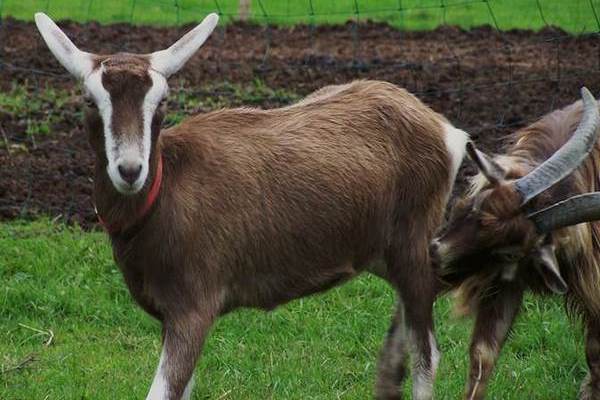
The Toggenburg or Toggenburger is a Swiss breed of dairy goat. Its name derives from that of the Toggenburg region of the Canton of St. Gallen, where it is thought to have originated. It is among the most productive breeds of dairy goat and is distributed world-wide, in at least fifty countries in all continents.
Toggenburgs do not generally produce as much milk as the Saanen breed but have consistently good udders and are known for their persistent milk production over long periods. Fat yield is usually between 3% and 4%.
The breed performs at its best in cooler conditions and it is reported to be the least suited of the dairy breeds to tropical conditions.
Toggenburgs are a compact, robust, dairy-type animal (that is, with a dished or straight facial line and wedge-shaped body). They are usually slightly smaller than the other Alpine breeds. The does weigh at least 55 kg. The average height, measured at the withers, is about 79 cm for does and 90 cm for bucks.
Colour varies from deep chocolate brown to pale fawn and the coat is generally short and fine though longer coats are common. Toggenburgs have white or cream markings on various parts of their body. These markings may fade with age. Horns and tassels may or may not be present at birth. The ears are erect and point slightly forward. The muzzle is generally broad.
Toggenburgs have a decided personality and character, are very alert and extremely active. As a breed, they tend to group together and respond well to training, so therefore adapt easily to machine milking.
Toggenburg, breed of dairy goat originating in the Toggenburg valley of Switzerland. The oldest breed of dairy goat in the United States, the Toggenburg has proved widely adaptable. It is characterized by a comparatively small, solid-coloured body of any shade of brown, white ears with a dark central spot, two white stripes down the face, and predominantly white legs. As is that of other goats, milk of the Toggenburg is whiter and more easily digestible than cow’s milk.